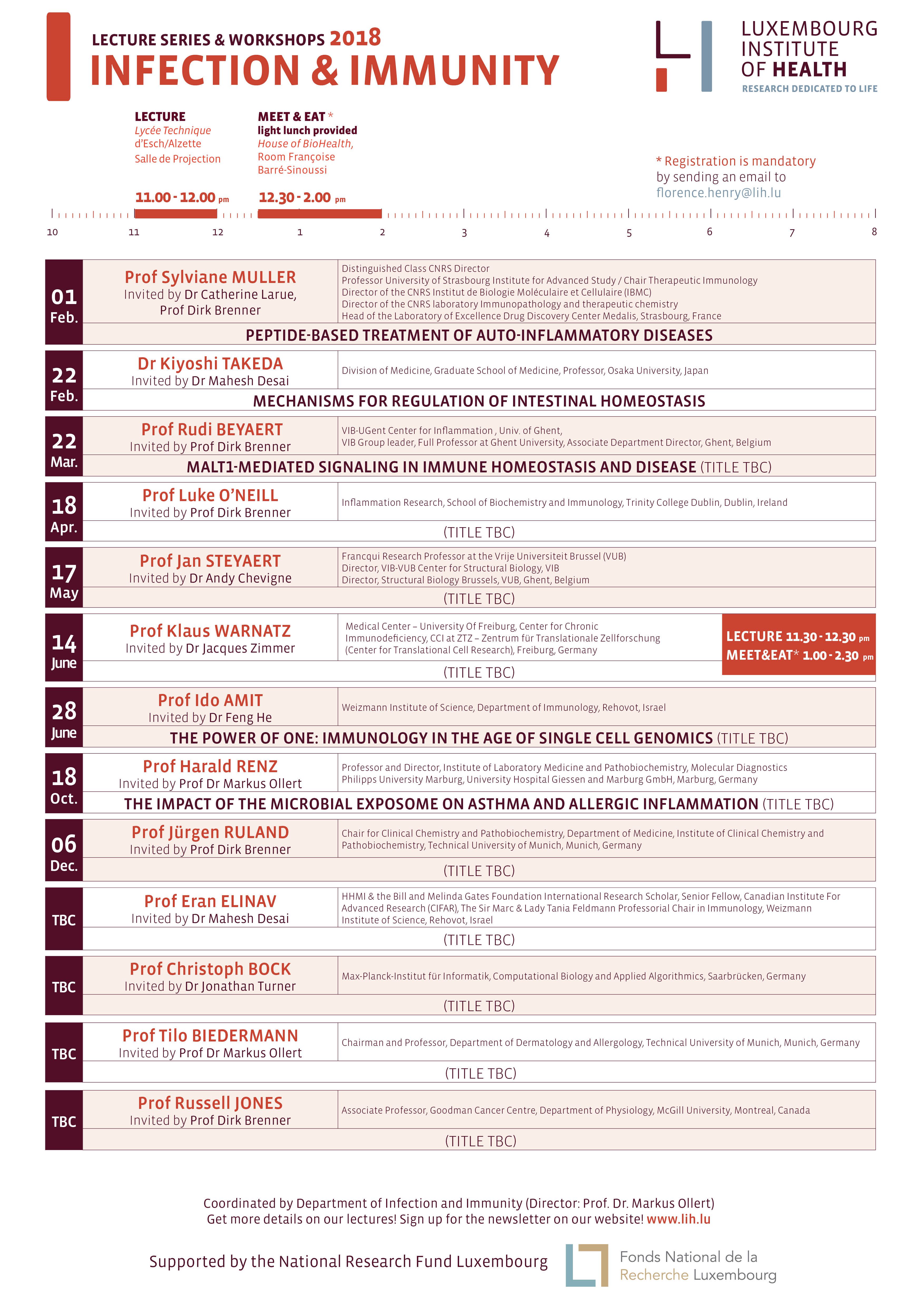Lecture series Infection & Immunity: "OPPOSING IMMUNE CONSEQUENCES OF CUTANEOUS INNATE IMMUNE SENSING" - Prof Tilo Biedermann
10/01/2019 11:00 to 10/01/2019 14:00 (Europe/Luxembourg)
Esch/Alzette,
Luxembourg
Speaker
Prof Tilo Biedermann is Head of Department, Dep. of Dermatology and Allergology, Technical University of Munich, Germany.

ABSTRACT
It becomes increasingly clear that the outer barriers of our body are very powerful regulators and initiators of immune responses. We also acknowledge today that the resident microbial communities at these barriers are an important part of proper barrier function. Microbial communities and the skin-embedded immune cells interact and form a tightly controlled and well-balanced network that is pivotal to support skin homeostasis, barrier functions, and the proper immune responses. It is well established that commensal bacteria are crucial for the training of the immune system so that it is ready to mount anti-infectious immune responses to properly mount wound healing, but, importantly to also condition the immune system for immune tolerance and resolution for cutaneaous inflammation. For these immune qualities to be established, initial innate immune sensing via pathogen recognition receptors or innate cytokine signalling through the e.g. IL-1 receptor are crucial. One model disease of research in this context is atopic dermatitis. Three entry points for this disease exist :i) reduced barrier function, ii) type II immune responses and iii) cutaneous dysbiosis. The latter is characterized by a dominance of Staph. aureus and reduced diversity of the cutaneous microbiome. Microbial habitats provide various ligands of Toll-like receptor (TLR) 2 as does Staph. aureus. Therefore, studying the role of TLR2 is very important for disclosing the barrier network and its functions. Our own analyses demonstrated that TLR2 ligands can transform initial and self-limiting type 2 dermatitis of the skin into a chronic and perpetuated inflammation. The underlying mechanism is that TLR2-induced IL-10 is directly blocked by type 2 cytokines such as IL-4. Exaggerated inflammation in the skin orchestrated by Staph. aureus even has the potential to drive systemic immune cell deviations, allowing severe complications of atopic dermatitis to develop. On the other hand, the potential of TLR2 ligands to induce IL-10 can also be exploited for therapeutic purposes. Topical application of lysates from Vitreoscilla filiformis, a non-pathogenic bacterium, in a placebo-controlled prospective clinical trial in atopic dermatitis could alleviate disease. Analyzing the underlying mechanisms we found increased IL-10 production by dendritic cells and T cells with regulatory functions leading to reduced dermatitis. Further analyses and translational development will allow us to shape the innate immune sensing for therapeutic purposes.
SCHEDULE
11:00 - 12:00 : LECTURE
Lycée Technique d'Esch/Alzette - Salle de projection audiovisuelle
12:30 - 14:00 : 'meet & eat'
House of BioHealth
Room Françoise Barré-Sinoussi
Registration required for the 'Meet & Eat' - send us an email.
About the Lecture & Workshop series - Infection & Immunity
The LIH Lecture Series and Workshops in Infection and Immunity, supported by the FNR, are gathering internationally recognised speakers to address topics around Infection and Immunity. Twelve lectures will be organised in 2019, followed by workshops especially dedicated to early-stage researchers. Please find here the full programme for 2019.
Attendance to the lectures and workshops are free of charge. Should you be interested in registering for the workshops, please feel free to do so by sending us an email.

